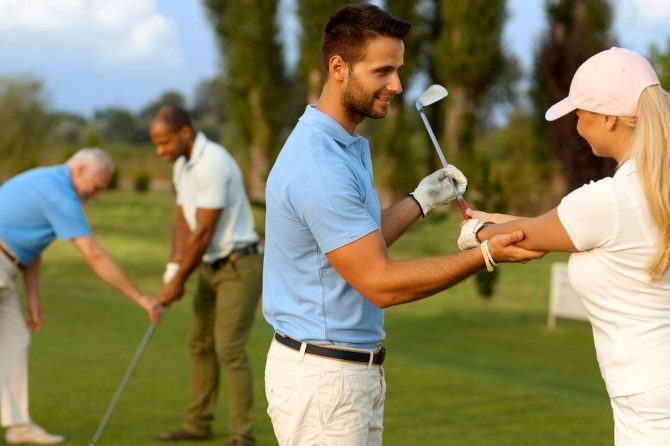– Understanding the Mechanics of Sam Snead’s Legendary Swing
Understanding the Mechanics of Sam Snead’s Legendary Swing
The evolution of Sam Snead’s swing began with his initial grip, which he modified over many years. He started with an overlapping grip. Then, he placed his right hand further down the shaft, maintaining the overlap but adding another finger for greater club control.
Snead’s swing was founded on flexibility, rhythm, and timing, but his most distinctive feature was his extreme takeaway and the full shoulder turn that accompanied it. This characteristic was a departure from the predominant swing methods of the time, which focused on a more rigid and constrained movement.
Snead’s ability to swing the club with his body, rather than his arms, resulted in exceptional power. His weight distribution and footwork also played vital roles, providing a solid base and promoting a smooth and balanced transition throughout the swing.
– Analyzing the Rhythm, Timing, and Tempo of Snead’s Motion
Rhythm, Timing, and Tempo of Snead’s Motion
Sam Snead’s golf swing was lauded for its perfect rhythm, impeccable timing, and consistent tempo, characteristics that contributed significantly to his extraordinary accuracy and power.
-
His swing followed a harmonious pattern, with a smooth transition between the backswing, downswing, and follow-through. Snead maintained a constant rhythm throughout, ensuring that each phase flowed seamlessly into the next.
-
The timing of his swing was equally precise. The time it took for him to transition from the backswing to the downswing, and the duration of the downswing itself, were both meticulously calculated. This ensured that his clubhead reached the ball at the optimal moment and with the maximum velocity.
-
Finally, Snead’s tempo was consistent throughout the swing. He maintained a steady, rhythmic pace, avoiding any sudden accelerations or decelerations. This consistency allowed for greater control over his swing and helped him produce consistently powerful shots.
- Mastering the Hinge and Release Mechanism in Snead’s Swing
Mastering the Hinge and Release Mechanism in Snead’s Swing
A crucial aspect of replicating Snead’s iconic swing lies in understanding the intricate hinge and release mechanism. This technique involves three distinct phases:
- Hinging the Club: At the top of the backswing, Snead would “hinge” his wrists, folding them downward while maintaining a 90-degree angle with the clubface. This hinge created leverage, stored energy, and allowed for a controlled transition into the downswing.
- Transitioning with the Pivot: As the club began to descend, Snead would initiate a pivotal motion of his torso, uncoiling through his hips while maintaining the hinge in his wrists. This pivot transferred energy from the lower body to the upper body, generating speed and power.
- Releasing the Hinge: The hinge would be gradually released as the club approached impact, with the wrists “unfolding” in a synchronized manner. This release unleashed the stored energy, allowing for a powerful and accurate strike that launched the ball on a precisely controlled trajectory.
By studying the hinge and release mechanism, golfers can gain a deeper understanding of Snead’s swing and potentially improve their own techniques. The ability to hinge the wrists, pivot effectively, and release the hinge at the opportune moment is a testament to Snead’s mastery of swing dynamics and remains an essential component of his timeless golf swing.
| Phase | Key Elements |
|---|---|
| Hinging | Fold wrists downward |
| Transitioning | Pivot torso |
| Releasing | Unfold wrists at impact |
Sam Snead, a legend in the golf world, left a lasting legacy through his exceptional swing technique. By adopting Snead’s principles, golfers can significantly improve their swing efficiency and consistency.
1. Swing Plane Control: Snead emphasized maintaining a shallow, inside-out swing plane to generate maximum power. This involved using a strong left wrist and keeping the clubhead slightly above the hands during the downswing. By adopting this swing path, golfers can produce a more penetrating ball flight with increased spin and distance.
2. Rhythm and Timing: Snead’s swing was renowned for its smooth, unhurried tempo. He believed in a slow backswing that allowed his body to naturally load into the shot. This deliberate rhythm ensured precise timing and a powerful downswing. Adopting this approach helps golfers stay in sync with their swing, reduce tension, and improve clubhead speed.
| Key Snead Techniques | Additional Tips |
|---|---|
| Maintain a shallow swing plane | Practice hitting balls on a downward trajectory |
| Use a strong left wrist | Strengthen your forearms and wrists with exercises |
| Establish a smooth swing rhythm | Practice swinging without hitting balls, focusing on tempo |
| Load your weight into the shot | Perform drills to improve weight transfer |
| Keep your head down | Use a towel placed under your chin during practice |
-
Grip: Snead’s interlocking grip, featuring the left-hand pinky intertwined with the right-hand index finger, promotes stability and control. Grip the club in the fingers, not the palms, to encourage a smooth and fluid swing.
-
Stance and Posture: A balanced and athletic stance is crucial. Stand with feet shoulder-width apart, knees slightly bent, and spine upright. Keep your head centered over the ball and eyes focused on the target.
-
Backswing: Initiate the backswing by cocking the wrists and rotating the hips. Swing the club back fluidly, keeping your elbows close to your body and your weight balanced. As the club approaches the top of the backswing, ensure your hands are level with your shoulders and your club is laid flat on the ground.
| Snead’s Swing Dynamics | Key Features |
|---|---|
| Backswing Rotation | Hips rotate 45 degrees, shoulders rotate 90 degrees |
| Downswing Sequence | Hips lead, followed by shoulders and arms |
| Hitting Zone | Clubface impacts the ball slightly after it has passed the low point of the swing |



